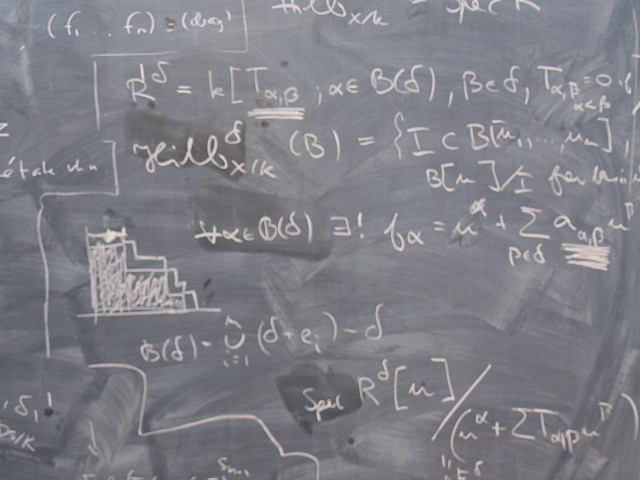Line integrals, surface integrals, flux integrals, divergence and curl. Gauss' and Stokes' theorems. Nabla calculus, curvilinear coordinates. Potential theory. Analytic function, conformal map, Laplace's and Poisson's equations, the Dirichlet and Neumann problems.
SF1649 Vector Analysis and Complex Functions 7.5 credits
This course has been discontinued.
Decision to discontinue this course:
No information inserted
Information per course offering
Course offerings are missing for current or upcoming semesters.
Course syllabus as PDF
Please note: all information from the Course syllabus is available on this page in an accessible format.
Course syllabus SF1649 (Autumn 2008–)Content and learning outcomes
Course contents
Intended learning outcomes
After the course the student should
Vector analysis
- be able to distinguish between different kinds of fields in mathematical physics: scalar field, vector field and tensor field.
- be able to explain the meaning of, and compute, divergence and curl of a vector fields, gradient of a scalar fields.
- be able to make vector analytic calculations by using the nabla operator.
- be able to compute flux integrals over (in general curved) surfaces in space, given in parametric or implicit form.
- be able to state and explain the meaning of Gauss' theorem and be able to use it in calculation of flux integrals.
- be able to compute line integrals and tell when they are independent of the path.
- be able to state and explain the meaning of Stokes' theorem and be able to use it in calculation of line integrals.
- be able to decide whether a given vector field has a scalar potential or not, and be able to compute it when it exists.
- be able to decide whether a given vector field has a vector potential or not, and in simple cases be able to compute it.
- be able to perform vector analytic calculations, not only in cartesian coordinates but also in curvilinear orthogonal coordinates (in particular cylindrical and spherical coordinates)
- describe how the Laplace and Poisson equations arise in mathematical physics and be able to solve them in simple cases.
Complex analysis
- have a good skill in calculation with complex numbers, in cartesian or polar form, in simple cases be able to interprete relations between complex numbers geometrically and in particular be able to determine reflection points with respect to straight lines and circles.
- know what is meant by an analytic function and be able to decide whether a given function is analytic or not, e.g. by checking Cauchy-Riemann's equations.
- know what is meant by a harmonic function and, to a given harmonic function, be able to find a conjugate harmonic function.
- have good working knowledge of the elementary analytic functions, e.g., be able to define them, compute their derivatives, discuss possible multivaluedness and choose natural domains of definition.
- know what is meant by a M–bius transformation and be able to decide how a given M–bius transformation maps a given circular region or half plane.
- be able to find out, in simple cases, how also other elementary functions map given domains and, conversely, find an analytic functions which performs a conformal map between two prescribed regions.
- be able to solve certain boundary value problems for Laplace's equation by mapping conformally onto regions (e.g., half planes or circular discs) for which explicit methods are available.
Literature and preparations
Specific prerequisites
SF1624 Algebra och Geometri, SF1625 Envariabelanalys, SF1626 Flervariabelanalys.
Literature
P.C. Matthews, Vector Calculus, Springer (1998).
Exempelsamling i A. Ramgard, Vektoranalys, 3:e upplagen
Olle Stormark: Komplexa funktioner.
Examination and completion
Grading scale
Examination
- TEN1 - Examination, 7.5 credits, grading scale: A, B, C, D, E, FX, F
Based on recommendation from KTH’s coordinator for disabilities, the examiner will decide how to adapt an examination for students with documented disability.
The examiner may apply another examination format when re-examining individual students.
If the course is discontinued, students may request to be examined during the following two academic years.
Other requirements for final grade
Written examination, possibly combined with continuous examination.
Examiner
Ethical approach
- All members of a group are responsible for the group's work.
- In any assessment, every student shall honestly disclose any help received and sources used.
- In an oral assessment, every student shall be able to present and answer questions about the entire assignment and solution.